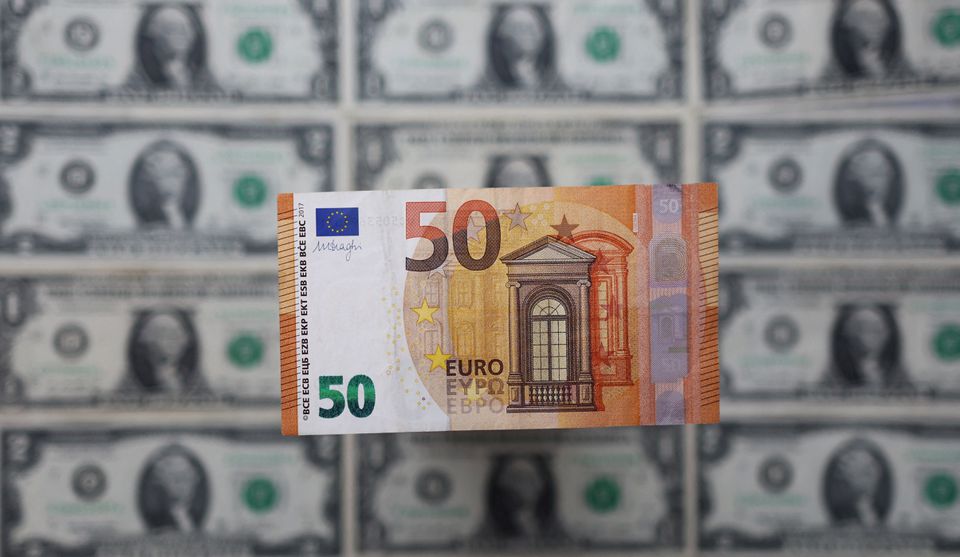The euro was set for its worst week versus the dollar in nearly two years, as the war in Ukraine and the prospect of sustained high commodity prices continued to drag on expectations of European economic growth.
The European common currency fell to as low as $1.1008 in early Asia trade, its weakest since May 2020, following news Ukraine’s Zaporizhzhia nuclear power plant – the largest of its kind in Europe – was on fire after an attack by Russian troops.
It recovered a little to $1.103 after Ukrainian and overseas officials said there were no indications of elevated radiation levels at the plant, but was still down 0.34 per cent on the day and 2.1 per cent this week, its worst week since March 2020.
The euro is also at its lowest in nearly four years against the Aussie dollar and hit its weakest levels since July 2016 versus sterling
Russian forces were continuing to surround and attack Ukrainian cities, on the ninth day of their invasion, including Mariupol, the main port in the east which has been under heavy bombardment.
“This war will be devastating for Ukraine. As for Russia, the short and longer-term implications will definitely hurt the economy. But EU countries will also be among those which will be hit the most by these sanctions,” said analysts at ING.
They said the effects of surging energy and gas prices could undermine the industrial and private consumption rebound that had been expected following the easing of COVID-19 restrictions, and was also likely to slow European Central Bank policy normalisation.
“At next week’s ECB meeting, any hints of rate hikes are out of the question,” they said.
In contrast, the US Federal Reserve is all but certain hike interest rates at its March 15-16 meeting for the first time since the pandemic.
Overnight, Fed Chair Jerome Powell repeated his comments from Wednesday that he would back an initial quarter percentage point increase in the benchmark rate.
Elsewhere, the Australian dollar continued its advance, helped by the commodities boom, and rose as high as $0.7362 on Friday, a new four-month high.
The Aussie’s gains are notable, Bank of America analysts said, given the presence of several factors such as the sell-off in global stocks, the still dovish Reserve Bank of Australia and broad dollar strength, which would normally be negative for the currency.
They attributed its gains to large dividend payments by resource companies leading to associated buying of Australian dollars, the broader effect of high commodity prices on Australia’s terms of trade and a bottoming out in the decline of the nation’s service exports.
High energy prices in turn have prevented the Japanese yen from benefiting as much from the safe-haven flows, as Japan is a net importer of energy.
The yen briefly climbed on the dollar when news of the fire emerged, but later gave up those gains and was little changed at 115.49 per dollar.
Elsewhere, sterling was on the back foot at $1.3342, as was bitcoin, which was off 2.7 per cent at $41,300.







Click here to change your cookie preferences